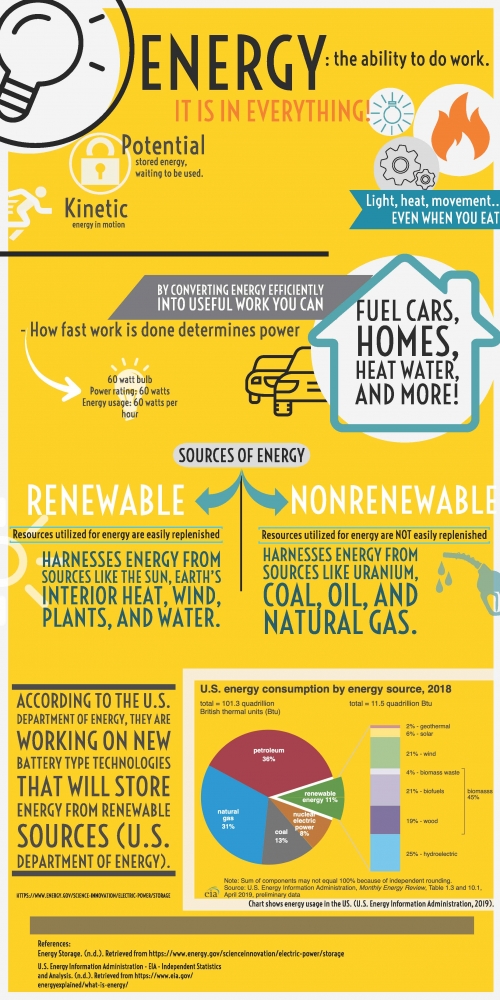
Energy: the ability to do work. It is in everything!
Potential: stored energy, waiting to be used.
Kinetic: energy in motion - light, heat, movement… even when you eat. How fast work is done determines power. By converting energy efficiently into useful work you can fuel cars, homes, heat water, and more!
- 60 watt bulb
- Power rating: 60 watts
- Energy usage: 60 watts per hour
Sources of Energy
Renewable: Resources utilized for energy are easily replenished Harnesses energy from sources like the sun, earth’s interior heat, wind, plants, and water.
Non-Renewable: Resources utilized for energy are NOT easily replenished. Harnesses energy from sources like uranium, coal, oil, and natural gas.
According to the U.S. Department of Energy, they are working on new battery type technologies that will store energy from renewable sources (U.S. Department of Energy). U.S. energy consumption by energy source, 2018.
Chart shows energy usage in the U.S. (U.S. Energy Information Administration, 2019).
Total = 101.3 quadrillion British thermal units (Btu)
- Petroleum 36%
- Natural gas 31%
- Coal 13%
- Nuclear electric power 8%
- Renewable energy 11%
Renewable energy total =11.5 quadrillion Btu
- Geothermal 2%
- Solar 6%
- Wind 21%
- Biomass waste 4% (biomasses total 45% - waste, biofuels, wood)
- Biofuels 21%
- Wood 19%
- Hydroelectric 25%
References:
Energy Storage, (n.d.). Retrieved from https://energy.gov/ scienceinnovation/electric-power/storage
U.S. Energy Information Administration - EIA - Independent Statistics and Analysis (a.d.). Retrieved from https://www.eia.gov/energyexplained/what-is-energy/
...